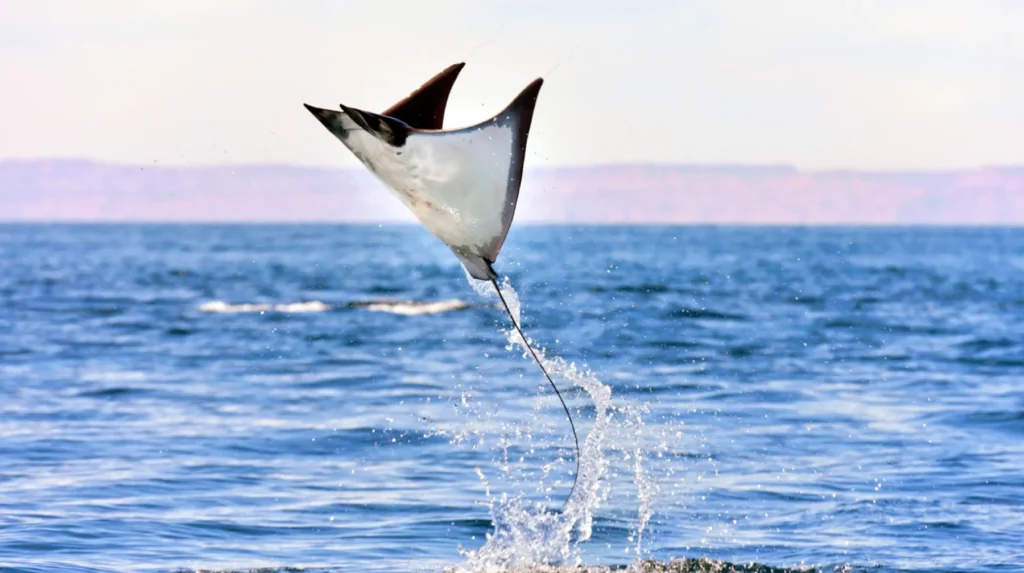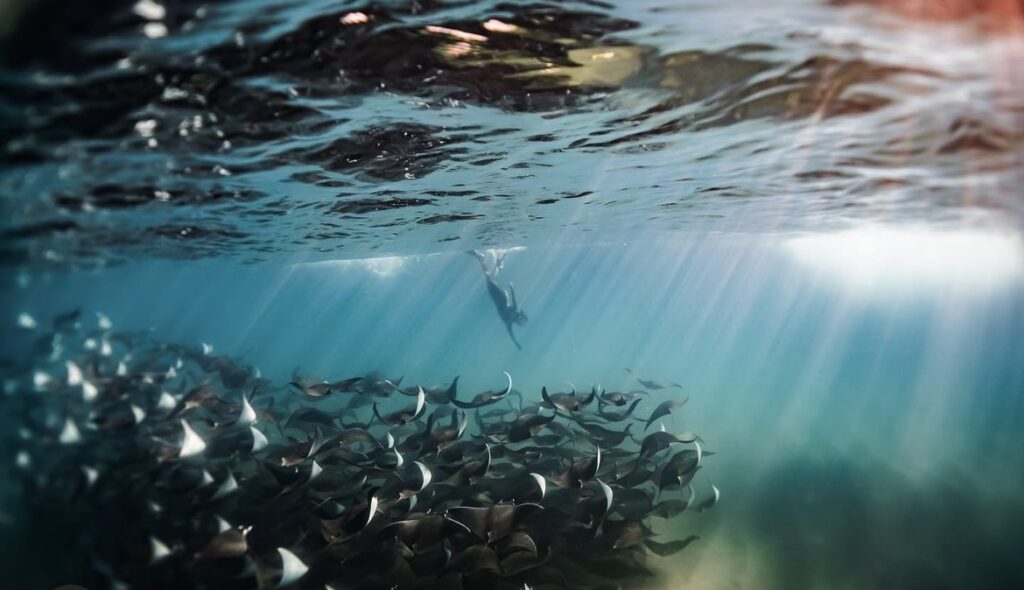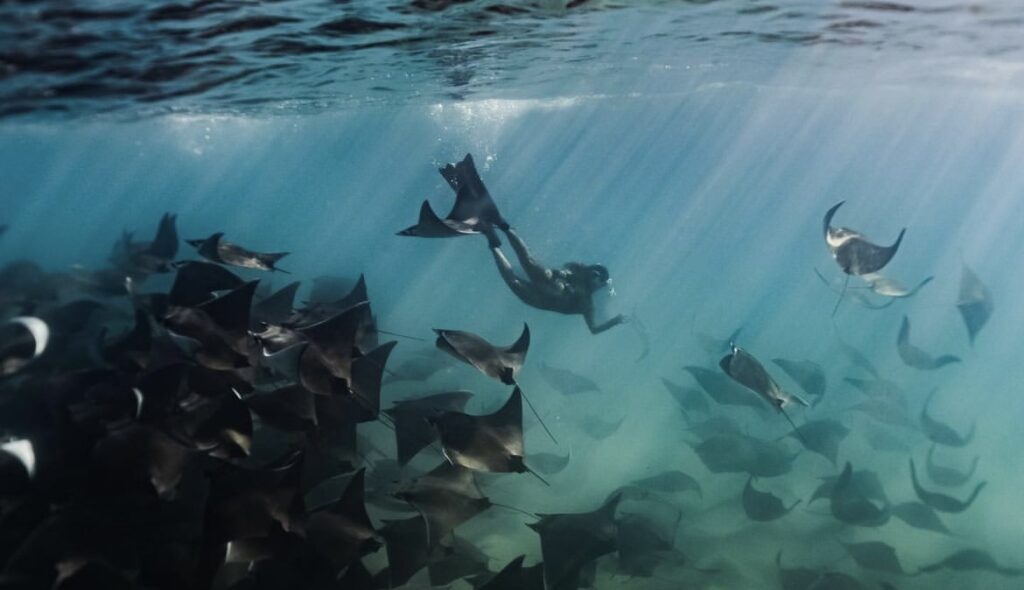
The spectacular jump of a Mobula
Species and Appearance
In the waters of Baja California Sur, several species of mobulas can be found, the most common being the Mobula munkiana, also known as the Munk’s devil ray. These creatures can grow up to 1.1 meters in wingspan and weigh around 30 kg. Unlike their relatives, the giant manta rays, mobulas are smaller in size but equally impressive. They have a flattened, disc-shaped body and long, triangular pectoral fins that allow them to glide gracefully through the water. Their colors range from dark gray to deep blue, with white bellies that help them camouflage from below.
Behavior and Migration
One of the most fascinating characteristics of mobulas is their migratory and social behavior. These animals are known for forming huge aggregations, which can include thousands of individuals. Mobulas migrate along the Pacific coast in search of food and favorable mating conditions. These rays are known to travel great distances, from the coasts of Mexico to Central and South America.
One of the most impressive natural spectacles is the so-called “mobula aggregation,” which occurs annually in the Sea of Cortez, near Baja California Sur. During this season, thousands of mobulas gather in a relatively small area, creating an incredible visual display for both divers and marine researchers.

IG: @jackelynriv snorkeling with mobulas
Feeding
Mobulas are filter feeders, meaning they feed on small organisms filtered from the water. Their diet consists mainly of plankton, small fish, and crustaceans. To feed, mobulas swim with their mouths open, filtering large volumes of water and trapping their food with their specialized gills. This feeding method is efficient and allows them to take advantage of the abundant marine resources of Baja California Sur.
Reproduction
Mobulas have a relatively low reproduction rate, making them vulnerable to environmental and human threats. These rays usually give birth to a single pup after a gestation period of approximately one year. The pups are born fully developed and can swim immediately after birth. Due to this low reproduction rate, conserving their habitats is crucial to ensuring the survival of mobula populations.

Mobulas in BCS
Conservation and Threats
Despite their remarkable adaptability and migratory skills, mobulas face several threats that jeopardize their survival. Bycatch, where mobulas are accidentally caught in fishing nets intended for other species, is one of the main threats. Additionally, habitat degradation and marine pollution also affect these rays.
In response to these threats, various organizations and governments have implemented conservation measures. In Baja California Sur, marine protected areas have been established, and sustainable fishing practices are promoted to minimize the impact on mobula populations. Furthermore, continuous research and monitoring are essential to better understand the dynamics of these species and develop effective conservation strategies.
Human Interaction and Tourism
Ecotourism is an important source of income for Baja California Sur and offers an opportunity for the conservation of mobulas. Activities such as diving and snorkeling allow visitors to observe these magnificent creatures up close in their natural habitat, fostering greater appreciation for marine life and the need to protect it. However, it is crucial that these activities are conducted responsibly to avoid disturbing the mobulas and their environment.
The mobulas of Baja California Sur are a testament to the region’s rich marine biodiversity. If you are interested, we can organize a tour that respects their conservation, where you can enjoy and learn more about their fascinating behaviors, impressive migrations, and unique beauty that make them an emblematic species worthy of admiration and protection. Through conservation efforts and responsible tourism practices, we can ensure that these majestic rays continue to soar through the oceans for generations to come.

IG: @jackelynriv snorkeling with mobulas